Corals for the aquarium: types and uses
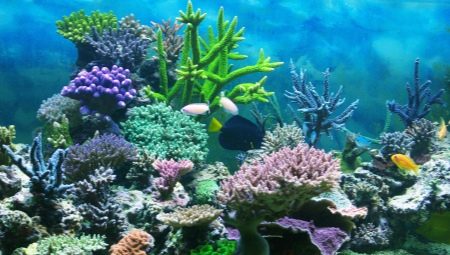
Underwater corals often amaze people with their beauty. Moreover, such organisms perform more than just a decorative function. They may well be called living creatures that require special nutrition and care. With their help, it is quite possible to recreate the natural conditions in the aquarium.
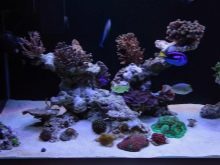
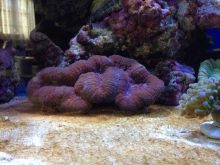
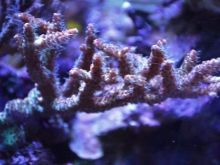
Live varieties
All aquarium corals fall into 2 categories: soft and hard.
Most often they live in colonies, however, there are also solitary species.
Some of them have a calcareous skeleton, and they are also called solid. They live on the seabed. Others consist of a soft base and live near reefs. Among them, it is worth noting those that do not require special care.
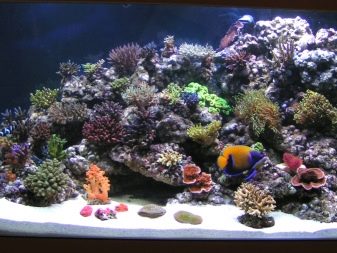
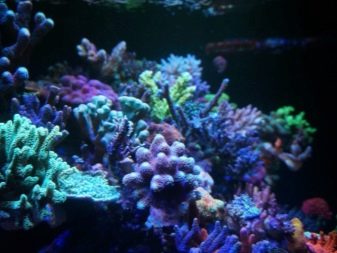
Anemones
This family of corals is completely skeletal. They are attached to the ground using special suction cups, which are called "soles". They feed on small fish or small molluscs. Anemones paralyze their prey with a strong poison, and then pull it up with their tentacles.

Lobophytum
This variety is especially toxic, so you should be more careful when choosing it for your aquarium. After all, she can easily poison nearby corals.
That's why they must be planted as far as possible from each other. For this living organism to feel comfortable, it needs a lot of light. Lobophytum should be fed with symbiote algae or plankton.

Acropora
It requires stability, as well as good lighting, and besides, it very badly tolerates any changes in temperature conditions. To keep the acropora in good shape, calcium or strontium must be added to the water.You can feed any algae, as well as plankton.
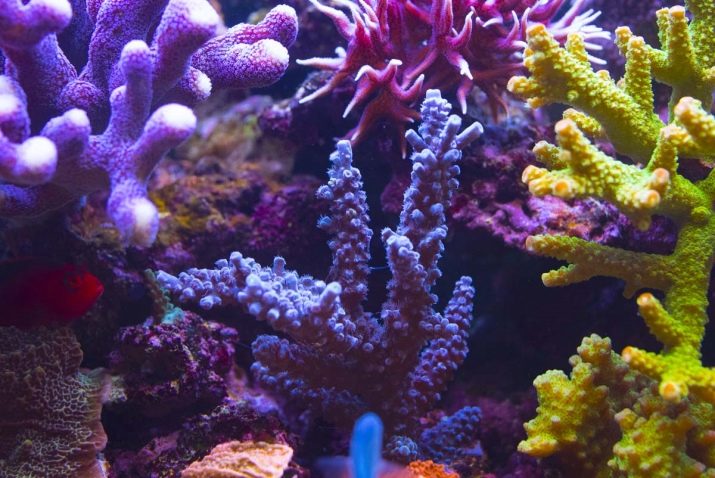
Sea coral mushrooms
They belong to the Actinodiscus family and remain a mystery to many biologists. Organisms cannot tolerate too bright light.
They thrive best when fluorescent lights are on next to the aquarium and the water flow is not too strong.
They can live with fish as well as active invertebrates. They feed using a mucous mesh. Mushrooms simply capture particles of substances that float around them.

Leathery
They belong to the Cladiella family and are quite a beautiful species of coral. In their natural environment, such corals are not too deep, so they will feel perfect in the aquarium under normal lighting, as well as the smallest water flow. Like fungi, leatherback corals can live with fish, crayfish or various invertebrates.
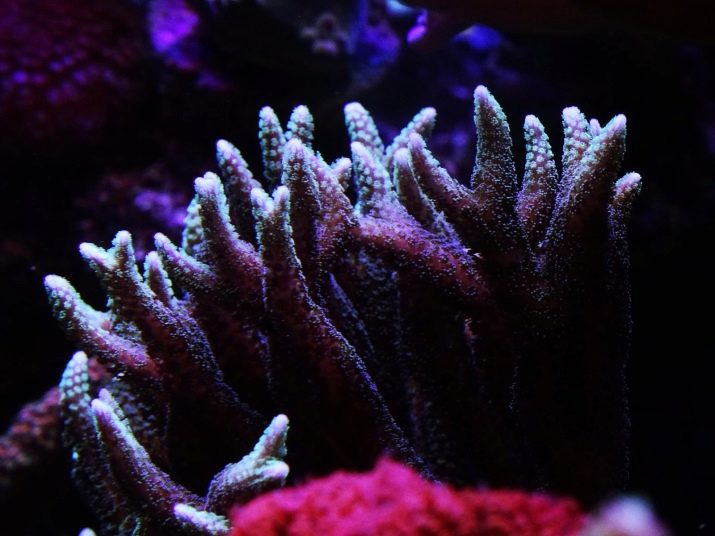
Star-shaped
This type of coral is completely unpretentious in keeping. They can perfectly exist both with good lighting, and with its lack.
In addition, such polyps are quite sensitive to iodine, which means that you should not install sponge filters too close to them.
Corals can also prevent mucus from forming on rocks as well as gravel. Organisms can be painted in different colors, from purple to violet-red. But among them you can find both dark and bright green shades.

Zoontarians
They belong to the Protopalythoa family. They reproduce very intensively in good light. They eat almost any food that comes their way. The color is brown, can produce palytoxin, which has a bad effect on the nervous system of people. As a result, a person may simply die.
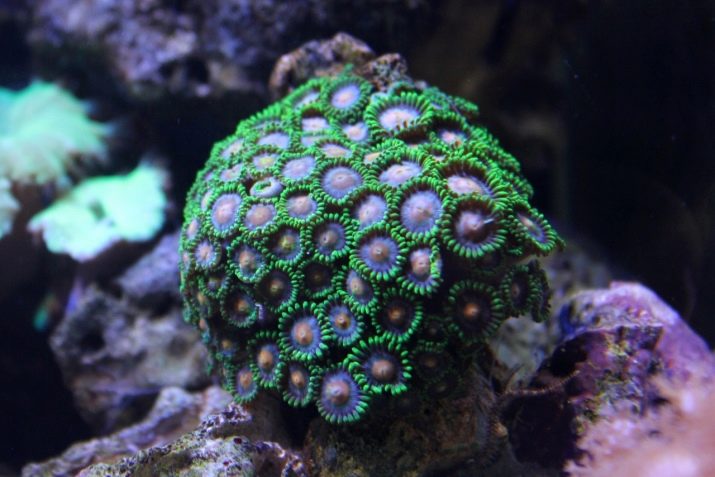
Toadstool mushrooms
In another way, such mushrooms are called sacrophytons. They divide quickly even in the dimmest lighting conditions.
They can adapt to any conditions and are therefore very popular with many aquarium enthusiasts.
Sacrophytons feed by absorbing various organic components from the water. They are painted in cream or brown colors.
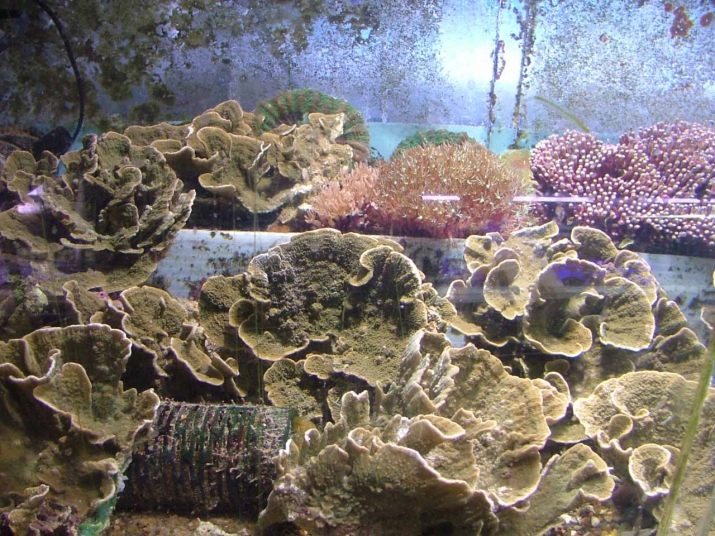
Golovachi
They breed best when the lighting is fairly bright. Their activity begins with the onset of night. While these corals are naturally peaceful, in some cases, venomous tentacles may begin to form.
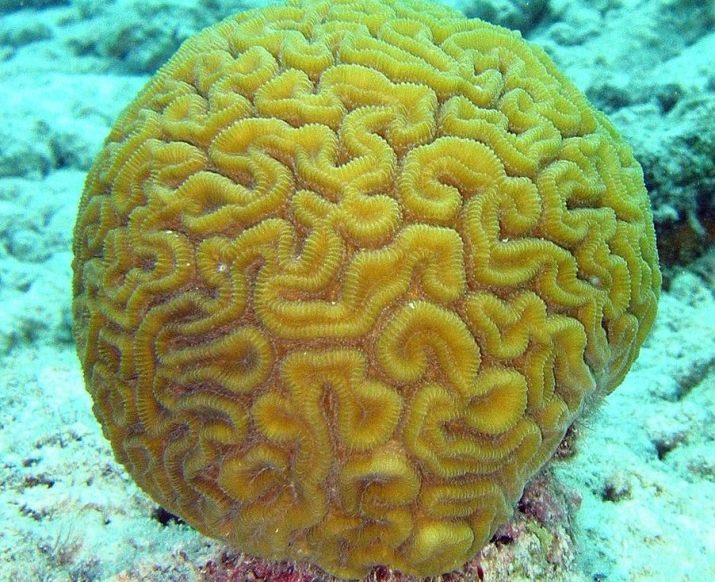
Madreporovye
Such corals differ in that they can live both in colonies and alone. They will feel great both in bright light and in the shade. But in any case, the water must be clear and clean. They can eat small pieces of meat such as shrimp or fish.
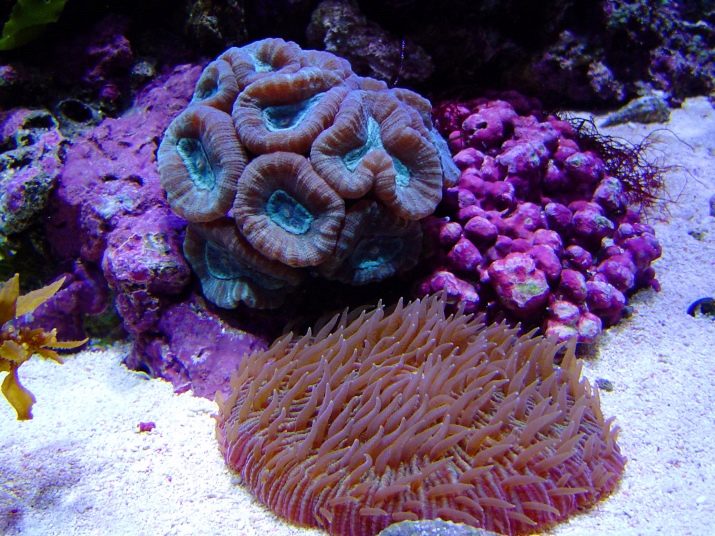
Pros and cons of artificial products
When it comes to artificial corals, this is the easiest way to decorate your aquarium. Most often they are made of silicone, so they are easy to clean and look like real ones. Artificial corals have many benefits. This is both high environmental friendliness and practicality. Besides they are durable, which means you don't have to constantly buy them again. As for their color, it is quite diverse.
To make this underwater decor look as natural as possible, you need to make sure that the corals look like real ones. However, artificial corals also have disadvantages.
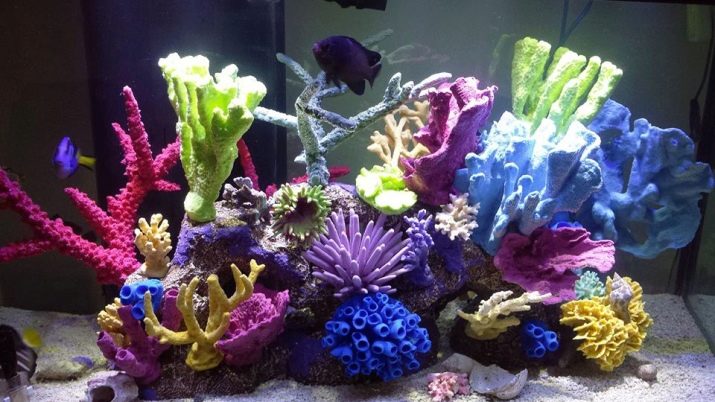
First of all, this is their high price. In addition, if low-quality materials are used for their manufacture, then the products will be toxic. This means that, first of all, the rest of the inhabitants of the aquarium will suffer.
How to choose?
Before buying corals, you need to take care of creating an ecological balance. Besides, you need to buy them in special stores, moreover, complete with small particles of the substrate. This purchase will help improve the coral's vitality in the future.
If it is cut off from the usual substrate, then it may not take root in the new environment.
It is imperative to buy corals that can coexist together. In addition, you need to consider where the aquarium itself will be located. After all, the choice of corals should depend on what kind of lighting will be.
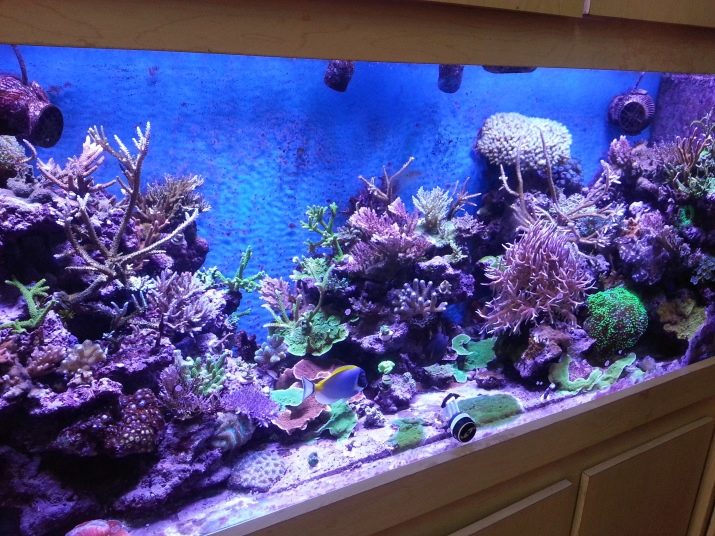
Content recommendations
To keep corals, you need to purchase an aquarium with a volume of at least 400 liters. The water in it should be within 22-27 degrees. This will allow the living corals to absorb from it all the substances necessary for the growth of the skeleton. In addition, the water must be clean and of high quality. It is important to ensure that it can circulate constantly.
The lighting in the aquarium should be suitable for the specific coral species. Everything must coexist in balance, otherwise the organisms will simply die. After the purchase, the coral must be placed on a stone on which it will grow in the future. You can attach it using special glue. Besides, Do not throw away dead corals, as they can still become part of the aquarium.
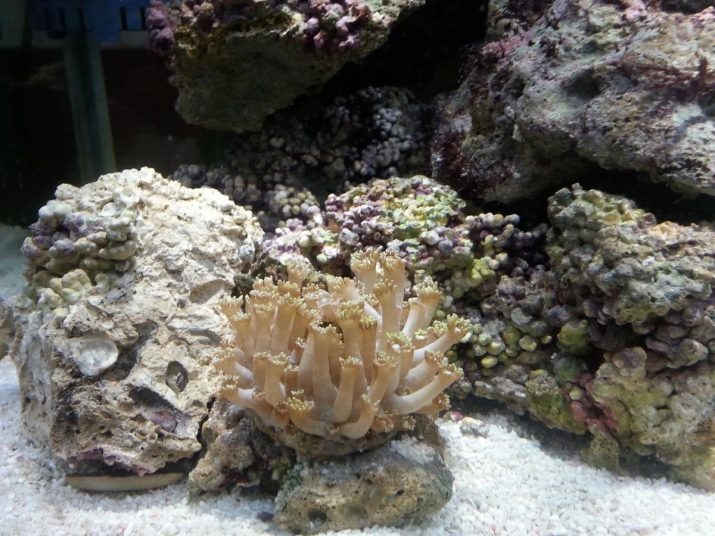
In the future, they will be able to produce bacteria that will help create conditions close to the present.
Another important issue is the nutrition of the selected corals. There are 2 options, one of which occurs as a result of photosynthesis in symbiotic algae. In the second case, nutrition occurs as a result of obtaining nutrients from the water.
Besides, be sure to pay attention to when corals develop polyps... This means it's time to feed them. The size of the food depends on the type of coral. Since they have no eyes, they eat everything that can be found nearby. As food, you can use various larvae, crustaceans or special dry foods that can be bought at any specialty store.
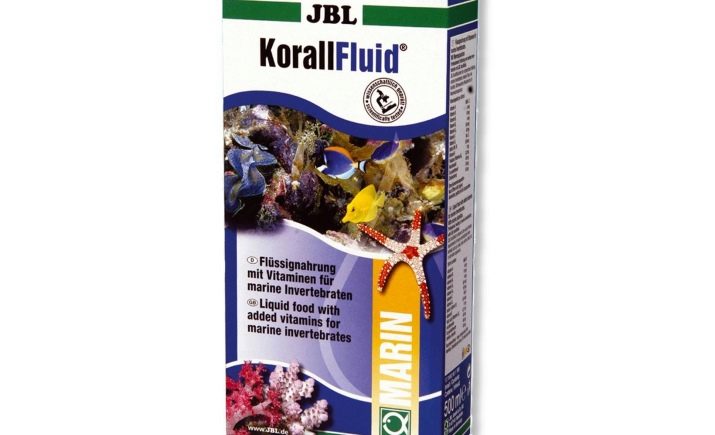
Design options
It is quite difficult to make an aquarium decoration with your own hands, especially if the owner of such a "marine nursery" is a beginner, but it is still possible. Today in stores you can buy many different elements for decorating an aquarium.
Among them there are snags of various shapes, and artificial stones or grottoes that will accompany the selected corals.
With their help, you can make real masterpieces that will delight others with their appearance.
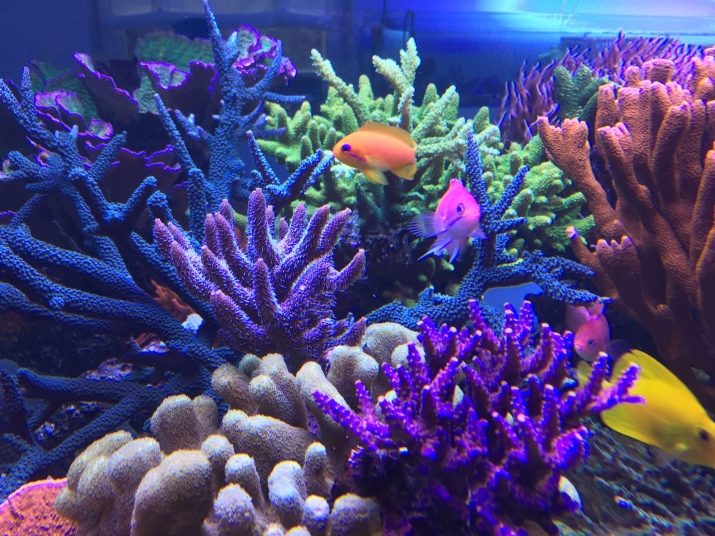
Coral tale
To bring such a fairy tale to life requires a lot of work. First of all, in the background of the aquarium, you need to make the desired background.
To do this, you can use either paint or special adhesive tape of the desired color.
Then the bottom of the aquarium should be covered with a ball of small pebbles or shells, as well as small stones on which the purchased corals can be placed. In addition, algae can be used as green spaces.
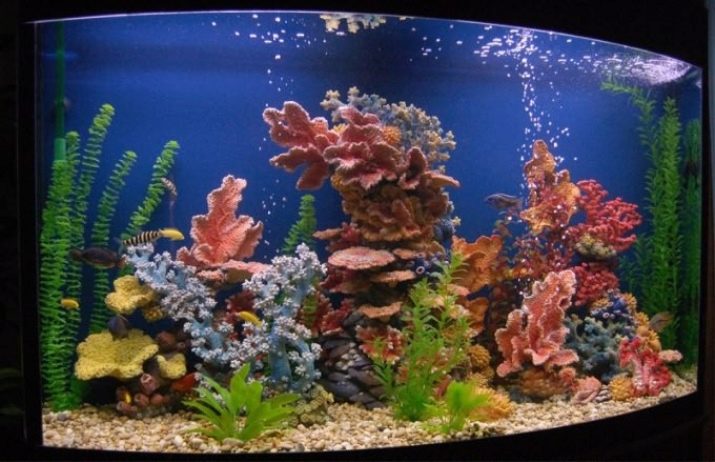
Pseudo-marine
To create such an aquarium, you will need not only corals, but also a substrate, which includes marble chips, coarse sand, and granular white quartz. Large shells, rocks and completely fossilized corals can be placed on the bottom as decorative elements.
When all the elements are completely decomposed, the purchased corals can be placed, creating a real sea kingdom. In this case, it is realistic to use both live corals and artificial ones. As you can see, there are a large number of corals from which you can create various seascapes in aquariums. If all the rules for caring for organisms are followed, then they will become an excellent decorative element in any aquarium.

For corals in a home aquarium, see below.








